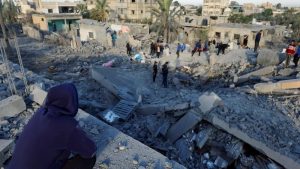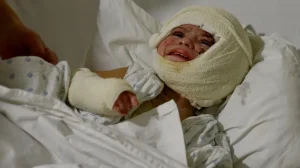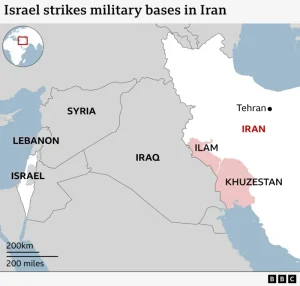Gaza war’s ‘darkest moment’ unfolding in north, UN says

Gaza war's 'darkest moment' unfolding in north, UN says
Ivana’s family was about to flee their home in southern Lebanon. An Israeli missile got there first. Now the two-year-old has third-degree burns on almost half her body. Her head and arms are encased in bandages.
Ivana looks lost lying a full-size bed in the burns unit of Geitaoui Hospital in Beirut. She is tiny and doll-like, but her cries are all too real. As she winces in pain, her father Mohammed Skayki fans her face, trying to distract her.
He recounts how his daughter’s skin and flesh was melted away.
It was noon, on 23 September – the day Israel began a massive bombardment of southern Lebanon, paving the way for its invasion a week later. There was no specific evacuation order for his area from the Israeli army, but the explosions were getting closer.
“We were ready to move, we had our stuff packed,” says Mohammed.
“The strike was close, around 10 metres from our house, right by the front door. The house shook. My daughters were playing on the balcony. I saw the little one – she was all black because of the missile dust. I carried her, something was exploding in the house and the ceiling was falling.”
In an instant the family was ripped from its roots in the town of Deir Qanoun En Nahr. “We left our house and only took the phones, and fifty dollars,” he says.
Rescuers rushed Ivana to hospital, with her older sister Rahaf. The seven-year-old’s injuries were less severe. She has already been discharged and is sheltering with relatives.
Mohammed shows me a photo of Ivana before the strike – her brown eyes open wide, a pink soother in her mouth, her face framed by brown curls. What’s left of her hair is now invisible beneath the bandages. Her scars may be with her for life.








